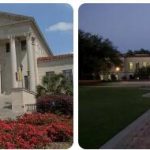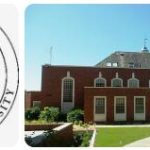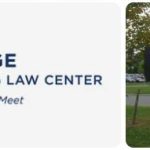The University of Houston Law Center was established in 1947 as the first public law school in the state of Texas. The Law Center was founded by a group of Houston attorneys and judges to provide legal education to students from the state and beyond. It is part of the University of Houston System, which includes four universities and six health institutions. Since its founding, the University of Houston Law Center has grown to become one of the most respected law schools in the country. Its faculty is comprised of some of the most prominent legal scholars in their fields, and its students come from all over Texas and beyond. The school offers a wide range of programs for both full-time and part-time students, including traditional Juris Doctor (J.D.) degrees, Master’s degrees in Legal Studies (M.L.S.), Doctorates in Juridical Science (D.Jur.), and dual degree programs with other areas like business or public policy. The University also offers specialized concentrations such as international law, environmental law, intellectual property law, sports law, health law, criminal justice, energy & natural resources law, tax & estate planning, immigration & nationality law and many more.
University of Houston Law Center is located in the state of Texas. As one of the leading law programs, University of Houston Law Center has a high average LSAT score of 159-163 when recruiting new students. As a return, the median starting salary for law graduates reaches $95,000 per year. See the following table for detailed admissions information and career profiles of University of Houston Law Center.
Admissions: University of Houston
The University of Houston Law Center is one of the top law schools in the country, with a long-standing reputation for excellence in legal education. The school’s admissions statistics are highly competitive, with an acceptance rate of just 25%. The median LSAT score for accepted students is 155, and the median GPA is 3.6. In recent years, the student body has become increasingly diverse, with students coming from all over the world to pursue their legal studies at UHLC. In addition to its rigorous academic standards, UHLC also provides a wide range of extracurricular activities for its students. From student organizations and moot court competitions to legal clinics and externships, there are many ways for students to get involved and develop their skills outside of the classroom. Furthermore, UHLC offers two joint degree programs – a JD/MBA program and a JD/MS program – allowing students to specialize in multiple areas of study while still earning their law degree.
| Fall 2019 Admissions and Enrollment Statistics | |
|---|---|
| Total number of full- and part-time applicants | 3,652 |
| Total number of full- and part-time acceptances | 903 |
| Overall acceptance rate | 24.7% |
| Total number of full- and part-time first-year students enrolled | 256 |
| Number of full-time program applicants | 3,021 |
| Number of full-time program acceptances | 817 |
| Full-time acceptance rate | 27.0% |
| Number of first-year full-time students enrolled | 205 |
| Number of part-time program applicants | 631 |
| Number of part-time program acceptances | 86 |
| Part-time acceptance rate | 13.6% |
| Number of first-year part-time students enrolled | 51 |
| Fall 2019 GPA and LSAT Scores | |
| 25th-75th percentile GPA scores for all students | 3.08-3.62 |
| 25th-75th percentile LSAT scores for all students | 159-163 |
| 25th-75th percentile undergraduate GPA for full-time students | 3.08-3.63 |
| 25th-75th percentile LSAT scores for full-time students | 160-164 |
| 25th-75th percentile undergraduate GPA for part-time students | 3.02-3.54 |
| 25th-75th percentile LSAT scores for part-time students | 156-161 |
Careers: University of Houston
| Bar Statistics (Winter and Summer 2018 administrations) | |
|---|---|
| State where the greatest number of first-time test takers took the bar | TX |
| School’s bar passage rate for first-time test takers | 91.3% |
| Statewide bar passage rate for first-time test takers | 84.4% |
| Class of 2018 Graduates | |
| Total graduates | 302 |
| Graduates employed at graduation | 76.1% |
| Graduates known to be employed nine months after graduation | 97.2% |
| Starting Salaries of 2018 Graduates Employed Full-time | |
| 25th percentile private sector starting salary | $60,000 |
| Median private sector starting salary | $95,000 |
| 75th percentile private sector starting salary | $160,000 |
| Percent in the private sector who reported salary information | 78% |
| Median public service starting salary | $47,400 |
| Areas of Legal Practice (Class of 2018) | |
| Percent employed in academia | 2.0% |
| Percent employed in business and industry | 21.0% |
| Percent employed in government | 10.0% |
| Percent employed in all judicial clerkships | 4.0% |
| Percent employed in law firms | 58.0% |
| Percent employed in public interest | 4.0% |
| Percent employed in an unknown field | 1.0% |
| Percent employed in a judicial clerkship by an Article III federal judge | 2.0% |
| 2018 Graduates Employment Location | |
| Graduates employed in-state | 90% |
| Graduates employed in foreign countries | 1% |
| Number of states where graduates are employed | 15 |
| New England (CT, ME, MA, NH, RI, VT) | 0.0% |
| Middle Atlantic (NY, NJ, PA) | 1.0% |
| East North Central (IL, IN, MI, OH, WI) | 1.0% |
| West North Central (IA, KS, MN, MO, NE, ND, SD) | 0.0% |
| South Atlantic (DE, DC, FL, GA, MD, NC, SC, VA, WV) | 2.0% |
| East South Central (AL, KY, MS, TN) | 0.0% |
| West South Central (AR, LA, OK, TX) | 91.0% |
| Pacific (AK, CA, HI, OR, WA) | 1.0% |
| Mountain (AZ, CO, ID, MT, NV, NM, UT, WY) | 2.0% |
| Employment location unknown | 1.0% |
| Career Services | |
| (Data appear as originally submitted by this school) | |
| Career services operations | The cornerstone of our placement office is superior career counseling designed to enable students to explore career options and develop job searching skills. Through counseling, panel discussions, networking receptions, workshops, job fairs, and partnership with the surrounding legal community we promote numerous legal and non-legal employment opportunities to our students. |
| Job Type | |
| Bar admission required or anticipated (e.g., attorney and corporate counsel positions, law clerks, judicial clerks) | 75.0% |
| J.D. preferred, law degree enhances position (e.g., corporate contracts administrator, alternative dispute resolution specialist, government regulatory analyst, FBI special agent) | 16.0% |
| Professional/other (jobs that require professional skills or training but for which a J.D. is neither preferred nor particularly applicable; e.g., accountant, teacher, business manager, nurse) | 6.0% |
| Nonprofessional/other (job that does not require any professional skills or training or is taken on a temporary basis and not viewed as part of a career path) | 2.0% |









